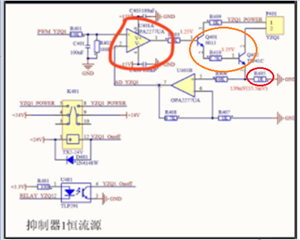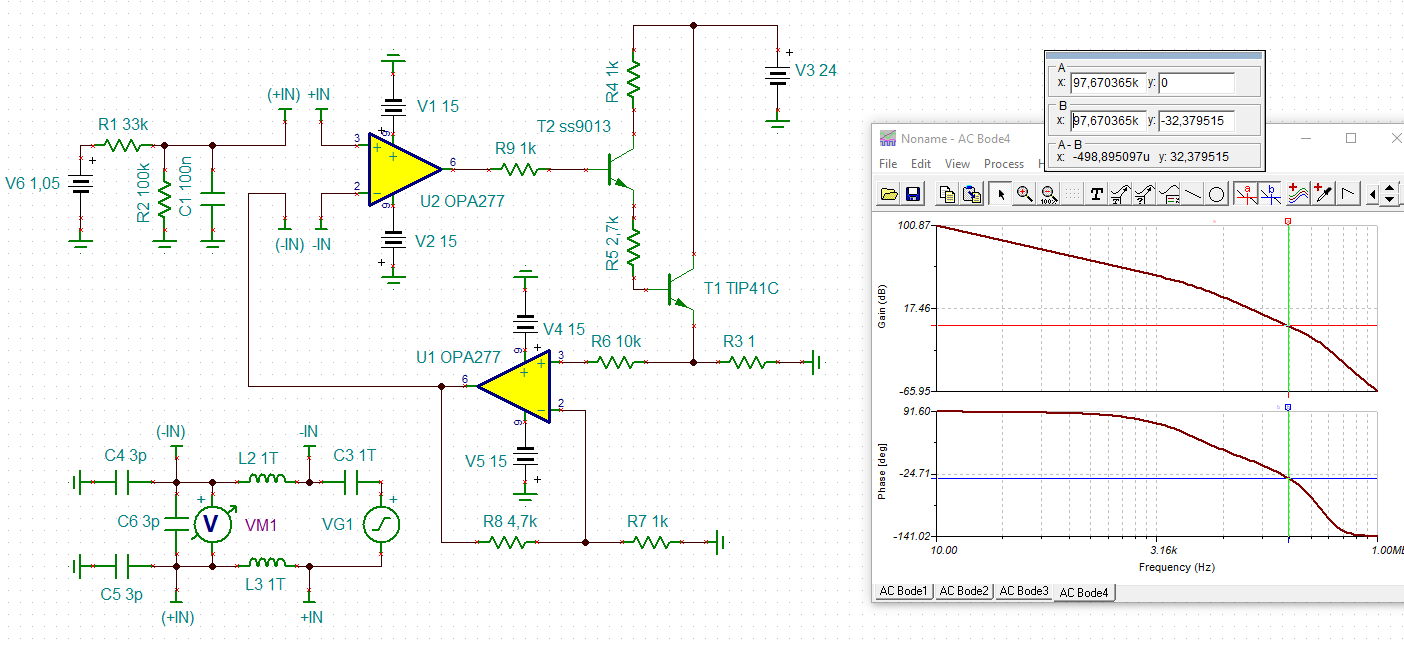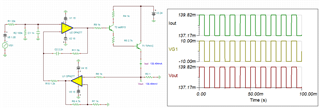Hi team,
Constant current source circuit sets abnormal current.
Using oscillograph analysis, the 1 feet of the operational amplifier OPA2277 have the following waveforms, and the waveform vanishes after the 2 foot of the multimeter pen is used.


Want to know how the waveform is generated?
Thank you very much for your help.
Best regards,







